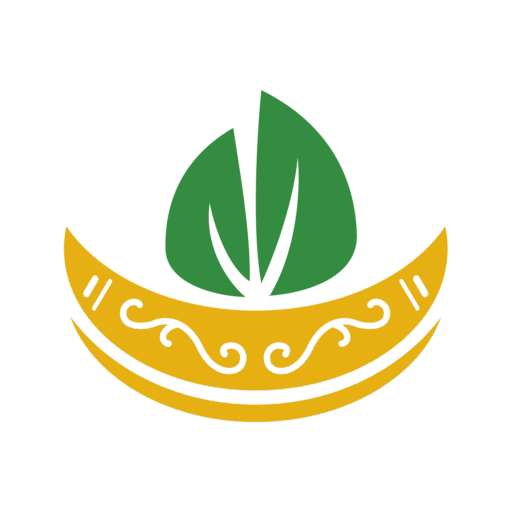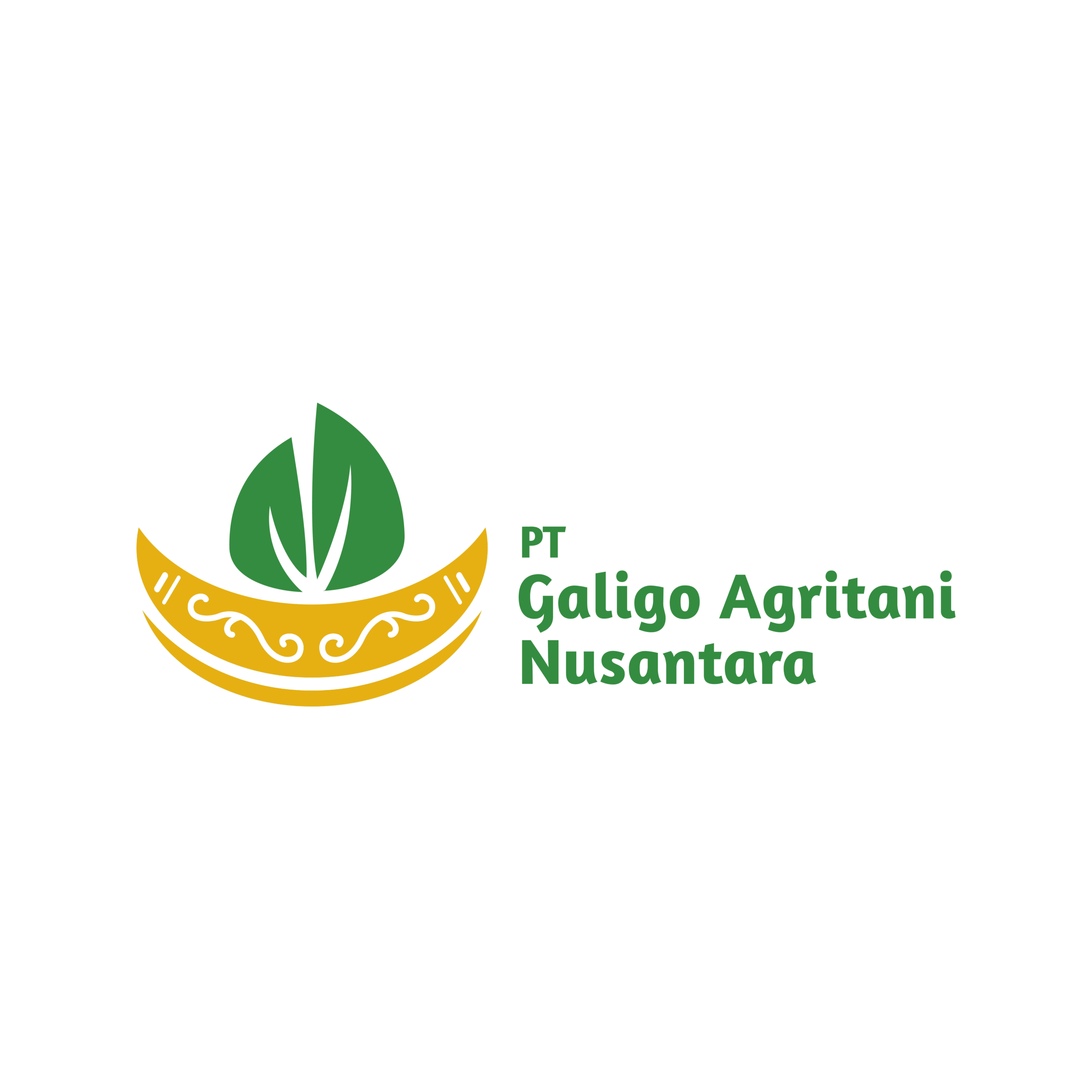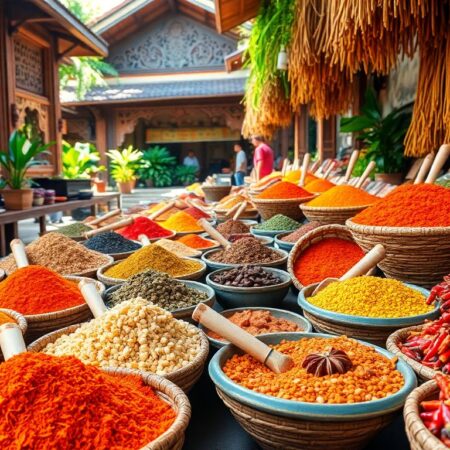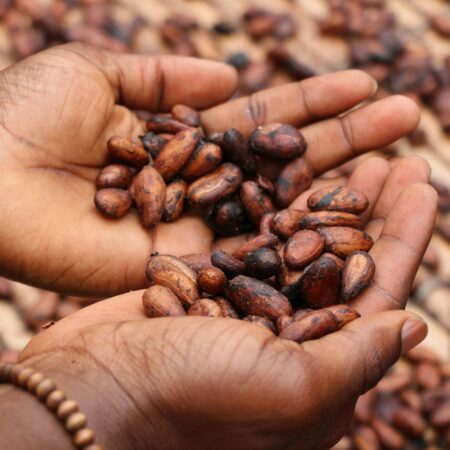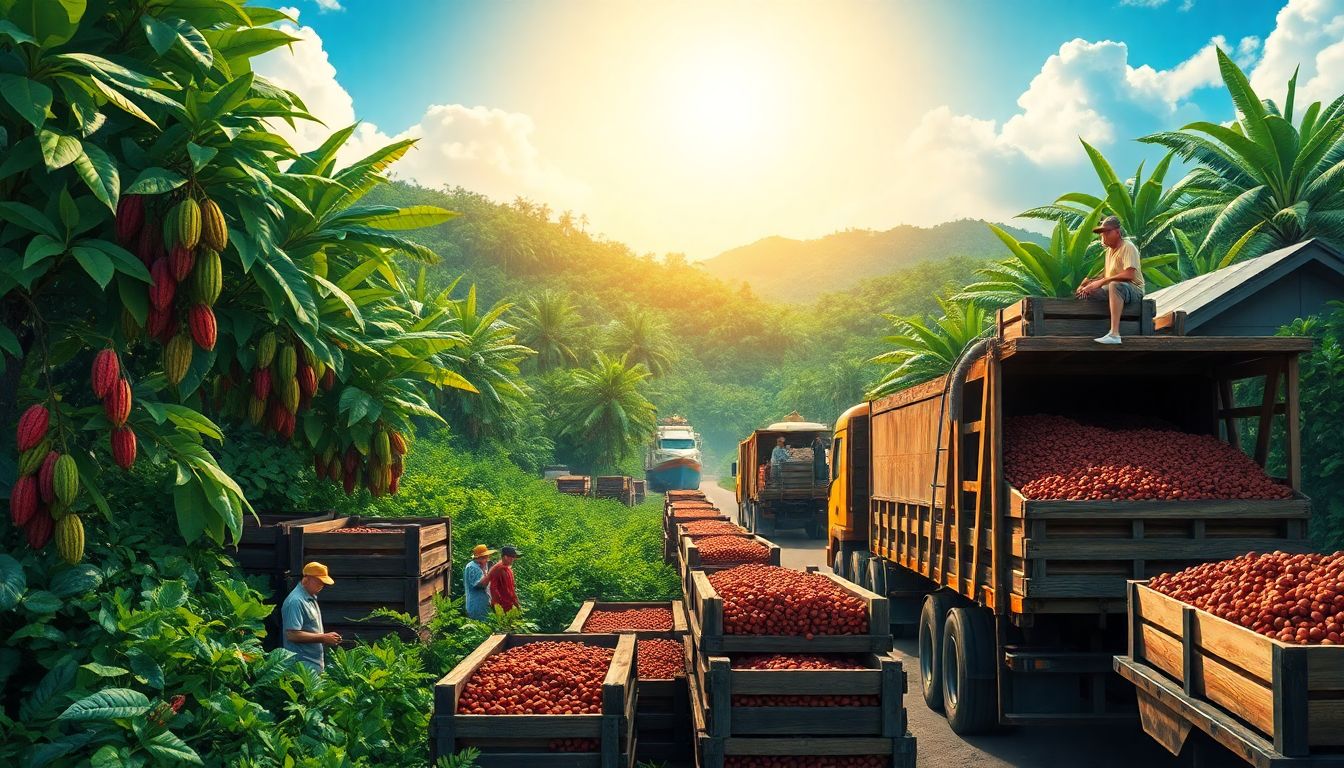

Cocoa in Indonesia for Exporters: Unlocking Opportunities in the World’s Largest Cocoa Producer
Introduction
Indonesia is quickly gaining recognition in the global cocoa scene. With rising demand for quality cocoa from Europe, North America, and Asia, the country is turning into a favorite for exporters. For those looking to tap into Indonesia’s cocoa industry, understanding the market potential is crucial. The climate, fertile land, and government support make it a promising area for cocoa production. This guide will show you why Indonesia should be on your export radar and how to succeed in this growing market.
Indonesia’s Cocoa Industry Overview
Current State of Cocoa Production in Indonesia
Indonesia produces around 700,000 metric tons of cocoa each year, making it one of the top producers in the world. The country’s output has grown steadily over recent years, driven by increased planting and improved farming methods.
The main cocoa regions are Sulawesi, Sumatra, and parts of Papua. Each area offers unique conditions for different cocoa types.
Indonesia cultivates various cocoa varieties like Criollo, Forastero, and Trinitario, with Forastero dominating due to its adaptability and high yield.
Market Potential and Export Statistics
Indonesia ranks among the top five global cocoa exporters, sending large quantities to markets in Europe, North America, and Asia.
The country’s cocoa exports have expanded year after year, with total export values reaching hundreds of millions of dollars annually.
Market trends suggest that demand for high-quality, organic, and sustainable cocoa is increasing, opening new niches for exporters.
Government Policies and Support for Cocoa Exporters
The Indonesian government has initiated programs to boost cocoa farming and exports. They offer incentives such as reduced taxes and training for farmers.
Export regulations require compliance with international standards and certifications — including quality assurance and safety checks.
Additionally, government agencies support exporters through training programs, financial aid, and access to information on global market trends.
Soil, Climate, and Agronomic Conditions for Cocoa Cultivation in Indonesia
Optimal Growing Conditions
Indonesia’s tropical climate is perfect for cocoa. Ideal weather includes temperatures between 21°C and 32°C, heavy rainfall, and high humidity.
Fertile volcanic soils with good drainage and organic matter make the land ideal for high-quality cocoa.
Climate variability, especially due to changing weather patterns, can impact yields, so sustainable practices are vital.
Cultivation Techniques and Best Practices
Modern farming methods like shade-grown cocoa and organic practices help produce premium beans.
Farmers often combine cocoa trees with other crops, creating agroforestry systems that protect land and boost income.
Pest and disease management, especially controlling cocoa pod borer and swollen shoot virus, is essential for healthy crops and higher yields.
Land Acquisition and Land Use Regulations
Foreign companies must follow local land laws, which often include restrictions and permits.
Understanding the land tenure system helps in negotiating safe land contracts.
Securing land legally is key for long-term, sustainable cocoa farming.
Quality Standards and Certification for Indonesian Cocoa Exports
International Quality Standards
To sell cocoa abroad, meeting standards like ISO, Fair Trade, and Organic certifications is essential.
These certifications assure buyers your cocoa is safe, high-quality, and sustainably farmed.
Indonesian cocoa farms implement strict quality controls to meet these standards consistently.
Certification Process and Requirements
Getting certified involves steps like farm inspections, documentation, and process audits.
Farmers and exporters need to provide proof of quality, organic practices, and social responsibility.
Third-party certifiers and government agencies assist throughout this process.
Enhancing Export Competitiveness Through Certification
Certifications open doors to premium markets and attract buyers willing to pay more.
They also build trust, helping exporters create a strong reputation.
Many successful Indonesian exporters profit from certifications by focusing on organic or sustainable products.
Export Logistics and Market Entry Strategies
Supply Chain and Infrastructure
Sea freight is the most common transportation, with major ports like Tanjung Perak in Surabaya and Belawan in North Sumatra.
Air freight is used for urgent shipments or smaller quantities.
Proper packaging, labeling, and storage are key to maintaining cocoa quality during transit.
Navigating Export Procedures
Exporters need licenses, customs clearance, and phytosanitary certificates.
Documentation such as commercial invoices, bill of lading, and safety certificates are mandatory.
Free trade agreements help reduce tariffs, making Indonesian cocoa more competitive globally.
Developing Market Entry Strategies
Build relationships with international buyers through trade shows and online platforms.
Participate in cocoa and chocolate expos to meet clients firsthand.
Use digital marketing to showcase your products and target specific markets.
Challenges and Opportunities for Cocoa Exporters in Indonesia
Current Challenges
Price swings in the global market can affect revenue.
Maintaining consistent quality across batches remains difficult.
Bureaucratic processes and regulations can slow down export transactions.
Opportunities for Growth
The global shift towards organic and specialty cocoa is creating new markets.
Exporting processed products like cocoa butter, powder, or chocolates adds value.
Partnering with local farmers and cooperatives can ensure steady supply and fair practices.
Conclusion
Indonesia stands out as a key player in the world of cocoa exports. With fertile land, supportive policies, and quality-focused production, it holds promising opportunities. New and existing exporters should prioritize certifications, market research, and building strong networks. Sustainability and innovation will keep Indonesian cocoa competitive in the years to come. Whether you’re just starting or expanding your reach, the future for cocoa in Indonesia looks bright.
Key Takeaways
- Indonesia’s cocoa industry offers significant export opportunities, especially for organic and premium products.
- Understanding local conditions, regulations, and export logistics is crucial for success.
- Staying updated on global market trends and certifications will give you an edge in competitive markets.
Grow your business by tapping into Indonesia’s vibrant cocoa sector. With the right approach, you can build a thriving export operation in this promising industry.
